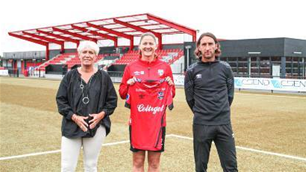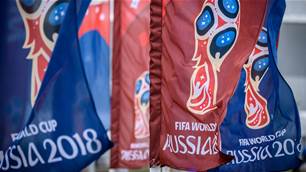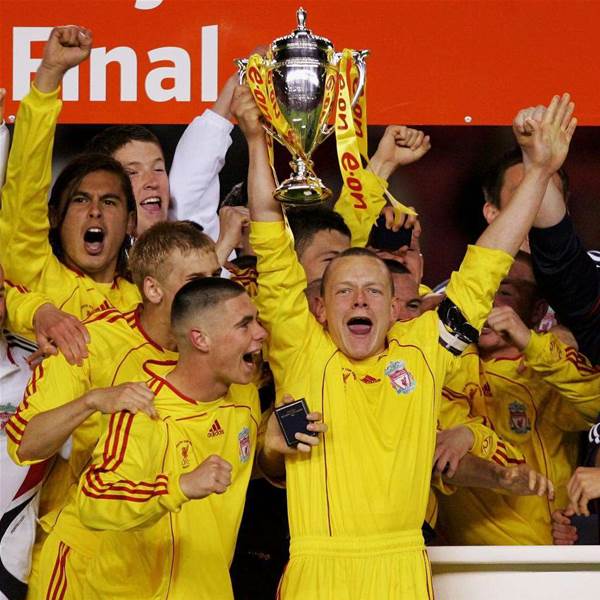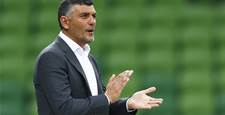In the second of our four-part series, we meet the Europeans who are leading the way in youth development.
Page 1 of 3 | Single page
When a third of your country lies below sea level, you need a little blue sky thinking to keep your head above water. Fortunately that’s an area in which the Dutch are masters. For more than a thousand years this tiny country has achieved the impossible and successfully reclaimed land from the ocean. In football, their accomplishments have been similarly miraculous. With a population numbering fewer than 15 million, a professional league only 50 years old and a comparative lack of financial resources, they have managed to consistently compete against the bigger nations of Planet Football. How? By
becoming experts in youth development.
No other country in the world has squeezed so much talent from such scarce resources as Holland. And if it’s Ajax who have a reputation as Europe’s premier producer of youth talent, the truth is that in every corner of this tiny nation, clubs are producing top-class footballers – and they have been doing for years.
“Ajax were always known for homegrown players,” says Andy Roxburgh, the former Scotland manager who is now UEFA’s technical director. “They had wise old heads like Rinus Michels, Leo Beenhakker and Louis van Gaal who paid a lot of attention to the youth teams and talked a lot about grassroots. Rinus would talk about having a ‘red thread’ from the top of the club to the bottom. Ajax’s youth system was very well promoted, shall we say, but they
certainly weren’t the only club doing it.”
These days, says Edward Sturing, the head of PSV Eindhoven’s youth academy, five clubs dominate youth development: Ajax, PSV, Feyenoord, AZ Alkmaar and Heerenveen. “Across all the age groups, the successful teams are spread between those five clubs, but no one club dominates,” adds the former Holland international. “Ajax have a great programme, but it’s no better than many other clubs.”
The reason, says Roxburgh, is simple: “In Holland, they don’t just make the kids do training drills. They’re given time to practise on their own so they can develop individual skills. The preparation that goes into youth development in Holland is very detailed.”
But what exactly does this detailed preparation involve? Asking the question to Sturing is like throwing a hungry dog a bone. “OK, let me show you on my laptop,” he says, dragging FourFourTwo to his desk in his plush office inside PSV’s youth academy. The next 20 minutes is like being back at school in a science lesson, as detailed coaching schedules, diagrams and charts for all the different age-groups flash before our eyes.
“With our seven to 12-year-olds the first thing we work on is individual skill, playing on their own,” Sturing explains with gusto. “Then we move them into one-on-one situations. Then into two attackers against one defender. After that it’s an eight-versus-eight game situation where winning is not important and the emphasis is on taking risks and playing attacking
football. You can see with players like Arjen Robben [a PSV youth product] that this is the way he learnt to play the game.”
This blueprint is not unique to PSV, either: it’s written and handed down by the KNVB, the Dutch FA, and all the country’s professional clubs buy into the vision. “When we play 11 versus 11 we must play 4-3-3,” says Sturing, pointing at yet another diagram on his computer. “It’s a more difficult system, but it’s more flexible and it means players can adapt more easily.”
The small details are all taken care of. The KNVB states that for every under-17 team, there must be two head coaches (“It’s a difficult age, when boys become men,” explains Sturing, pointing at his head), while at every club there is a dedicated skills coach and, remarkably, two “co-ordination
trainers”. “The biggest problem for seven to 12-year-olds is ball control and body control,” explains Sturing, dragging us outside to illustrate his point.
On the training ground, we find four 12-year-old boys decked out in distinctive red and white PSV shirts with black shorts. The only time a ball is used is when they begin a one-handed throwing and catching exercise. The rest of the time they’re doing roly-polys, handstands and cartwheels. “You have to be the boss of your own body – and we can coach that.” Never mind total football, this is total training.
But the top clubs do not work alone. Without the thriving local football scene they would struggle. There is no organised schools football, but there are nearly 2500 local clubs of which 95 percent have a fully functioning youth set-up. Every weekend all those clubs play competitive matches in the age groups between seven and 19. That’s a lot of football and a lot of footballers.
“In Holland the pyramid is very big,” explains Sturing, making a triangle with his two hands. “To have so many local clubs for such a small country is amazing, because the base of the pyramid is so big there is a lot of quality at the top.”
So in terms of young players, the Dutch have quality and quantity, but it’s what they do with the raw materials that gives them an edge. Few can dispute that the best coaches in the world are produced in Holland. In 1999, FIFA honoured Rinus Michels as coach of the century. At last year’s World Cup, there were four Dutch coaches – Marco van Basten (Holland), Guus Hiddink (Australia), Leo Beenhakker (Trinidad and Tobago) and Dick Advocaat (South Korea). In contrast there wasn’t a single Englishman.
In Zeist, just east of Utrecht, the only dedicated coaches’ academy in the world has been producing top coaches for the past 30 years. Today, there are more than 100 Dutch coaches working around the world and if CVs are anything to go by, the best of the current crop is Guus Hiddink. “Because we are such a small country,” says Hiddink, “we have to be very inventive. That’s why we get the best out of our young players and that’s why our training for coaches is long and hard and spread over many years.”
Youth coaches are particularly valued in Holland, with jobs in a club’s youth set-up very prestigious. Half of the youth coaches at Ajax, Feyenoord and PSV are former players. “I think if you want to be a good coach you need to start right at the bottom,” says Sturing. “I’ve coached at all the different age groups and it’s the only way you can make mistakes and try different things. If you start at the top level you can’t make mistakes because you then have a problem.”
All of this begs the question: if Holland has the best coaches and the best youth system, why have they never won the World Cup? It’s a whole different discussion of course, but if there is a criticism of the Dutch youth system, it’s that there is too much emphasis on skill, technique and individualism. They may have produced some of the world’s greatest attacking talents, but can you name a truly world-class Dutch defender? Henk Span, editor of Dutch football magazine Hard Gras, certainly struggles. “Ronald Koeman was more a ‘libero’ than a defender,” he notes. “At the moment Khalid Boulahrouz is regarded as the best in Holland and he’s not looked good enough at Chelsea.”
But there are other reasons for Holland’s failure on the world’s biggest stage. “The Dutch are obsessed with playing beautiful football,” says Span. “We’d rather lose than win by playing ugly and that’s why we’ve never been world champions.”
becoming experts in youth development.
No other country in the world has squeezed so much talent from such scarce resources as Holland. And if it’s Ajax who have a reputation as Europe’s premier producer of youth talent, the truth is that in every corner of this tiny nation, clubs are producing top-class footballers – and they have been doing for years.
“Ajax were always known for homegrown players,” says Andy Roxburgh, the former Scotland manager who is now UEFA’s technical director. “They had wise old heads like Rinus Michels, Leo Beenhakker and Louis van Gaal who paid a lot of attention to the youth teams and talked a lot about grassroots. Rinus would talk about having a ‘red thread’ from the top of the club to the bottom. Ajax’s youth system was very well promoted, shall we say, but they
certainly weren’t the only club doing it.”
These days, says Edward Sturing, the head of PSV Eindhoven’s youth academy, five clubs dominate youth development: Ajax, PSV, Feyenoord, AZ Alkmaar and Heerenveen. “Across all the age groups, the successful teams are spread between those five clubs, but no one club dominates,” adds the former Holland international. “Ajax have a great programme, but it’s no better than many other clubs.”
The reason, says Roxburgh, is simple: “In Holland, they don’t just make the kids do training drills. They’re given time to practise on their own so they can develop individual skills. The preparation that goes into youth development in Holland is very detailed.”
But what exactly does this detailed preparation involve? Asking the question to Sturing is like throwing a hungry dog a bone. “OK, let me show you on my laptop,” he says, dragging FourFourTwo to his desk in his plush office inside PSV’s youth academy. The next 20 minutes is like being back at school in a science lesson, as detailed coaching schedules, diagrams and charts for all the different age-groups flash before our eyes.
“With our seven to 12-year-olds the first thing we work on is individual skill, playing on their own,” Sturing explains with gusto. “Then we move them into one-on-one situations. Then into two attackers against one defender. After that it’s an eight-versus-eight game situation where winning is not important and the emphasis is on taking risks and playing attacking
football. You can see with players like Arjen Robben [a PSV youth product] that this is the way he learnt to play the game.”
This blueprint is not unique to PSV, either: it’s written and handed down by the KNVB, the Dutch FA, and all the country’s professional clubs buy into the vision. “When we play 11 versus 11 we must play 4-3-3,” says Sturing, pointing at yet another diagram on his computer. “It’s a more difficult system, but it’s more flexible and it means players can adapt more easily.”
The small details are all taken care of. The KNVB states that for every under-17 team, there must be two head coaches (“It’s a difficult age, when boys become men,” explains Sturing, pointing at his head), while at every club there is a dedicated skills coach and, remarkably, two “co-ordination
trainers”. “The biggest problem for seven to 12-year-olds is ball control and body control,” explains Sturing, dragging us outside to illustrate his point.
On the training ground, we find four 12-year-old boys decked out in distinctive red and white PSV shirts with black shorts. The only time a ball is used is when they begin a one-handed throwing and catching exercise. The rest of the time they’re doing roly-polys, handstands and cartwheels. “You have to be the boss of your own body – and we can coach that.” Never mind total football, this is total training.
But the top clubs do not work alone. Without the thriving local football scene they would struggle. There is no organised schools football, but there are nearly 2500 local clubs of which 95 percent have a fully functioning youth set-up. Every weekend all those clubs play competitive matches in the age groups between seven and 19. That’s a lot of football and a lot of footballers.
“In Holland the pyramid is very big,” explains Sturing, making a triangle with his two hands. “To have so many local clubs for such a small country is amazing, because the base of the pyramid is so big there is a lot of quality at the top.”
So in terms of young players, the Dutch have quality and quantity, but it’s what they do with the raw materials that gives them an edge. Few can dispute that the best coaches in the world are produced in Holland. In 1999, FIFA honoured Rinus Michels as coach of the century. At last year’s World Cup, there were four Dutch coaches – Marco van Basten (Holland), Guus Hiddink (Australia), Leo Beenhakker (Trinidad and Tobago) and Dick Advocaat (South Korea). In contrast there wasn’t a single Englishman.
In Zeist, just east of Utrecht, the only dedicated coaches’ academy in the world has been producing top coaches for the past 30 years. Today, there are more than 100 Dutch coaches working around the world and if CVs are anything to go by, the best of the current crop is Guus Hiddink. “Because we are such a small country,” says Hiddink, “we have to be very inventive. That’s why we get the best out of our young players and that’s why our training for coaches is long and hard and spread over many years.”
Youth coaches are particularly valued in Holland, with jobs in a club’s youth set-up very prestigious. Half of the youth coaches at Ajax, Feyenoord and PSV are former players. “I think if you want to be a good coach you need to start right at the bottom,” says Sturing. “I’ve coached at all the different age groups and it’s the only way you can make mistakes and try different things. If you start at the top level you can’t make mistakes because you then have a problem.”
All of this begs the question: if Holland has the best coaches and the best youth system, why have they never won the World Cup? It’s a whole different discussion of course, but if there is a criticism of the Dutch youth system, it’s that there is too much emphasis on skill, technique and individualism. They may have produced some of the world’s greatest attacking talents, but can you name a truly world-class Dutch defender? Henk Span, editor of Dutch football magazine Hard Gras, certainly struggles. “Ronald Koeman was more a ‘libero’ than a defender,” he notes. “At the moment Khalid Boulahrouz is regarded as the best in Holland and he’s not looked good enough at Chelsea.”
But there are other reasons for Holland’s failure on the world’s biggest stage. “The Dutch are obsessed with playing beautiful football,” says Span. “We’d rather lose than win by playing ugly and that’s why we’ve never been world champions.”
Related Articles

Agent taking Aussies to Europe says 'doom and gloom' unfounded

Matildas veteran seals French move













